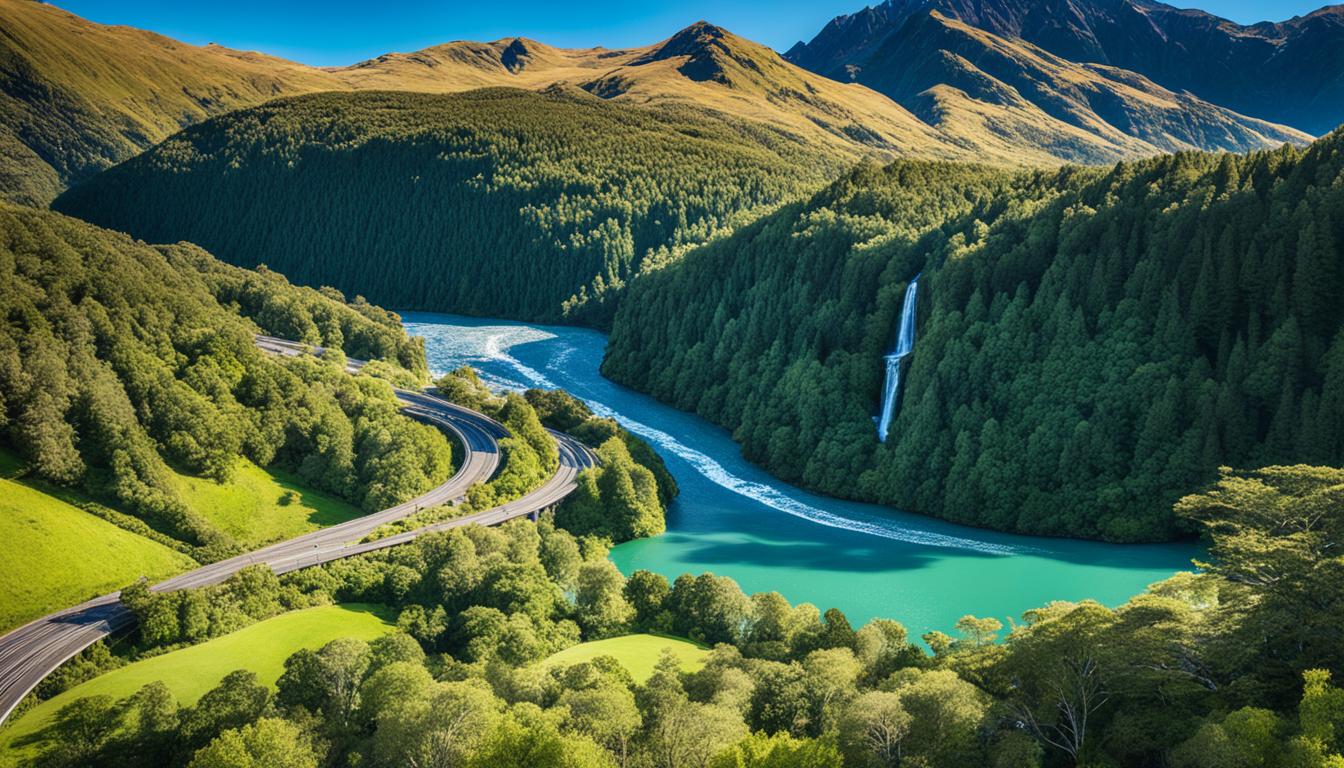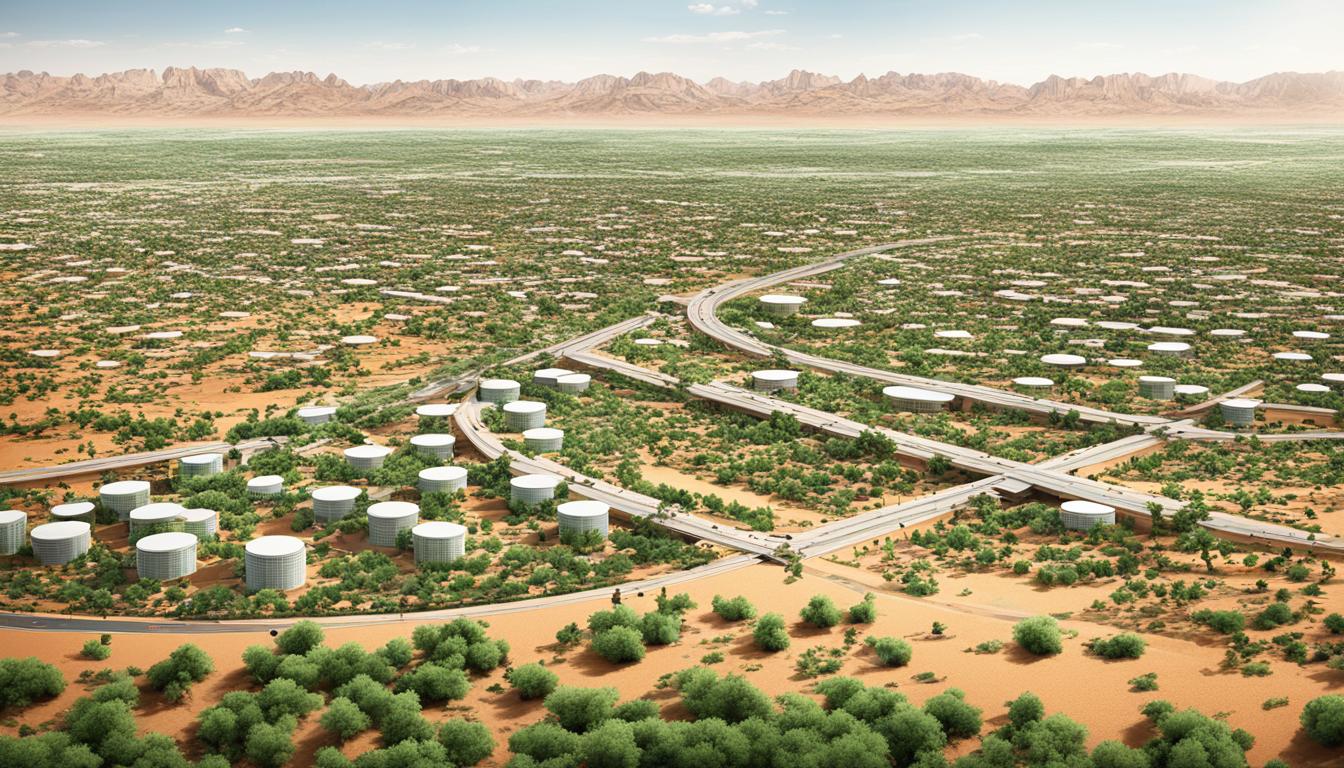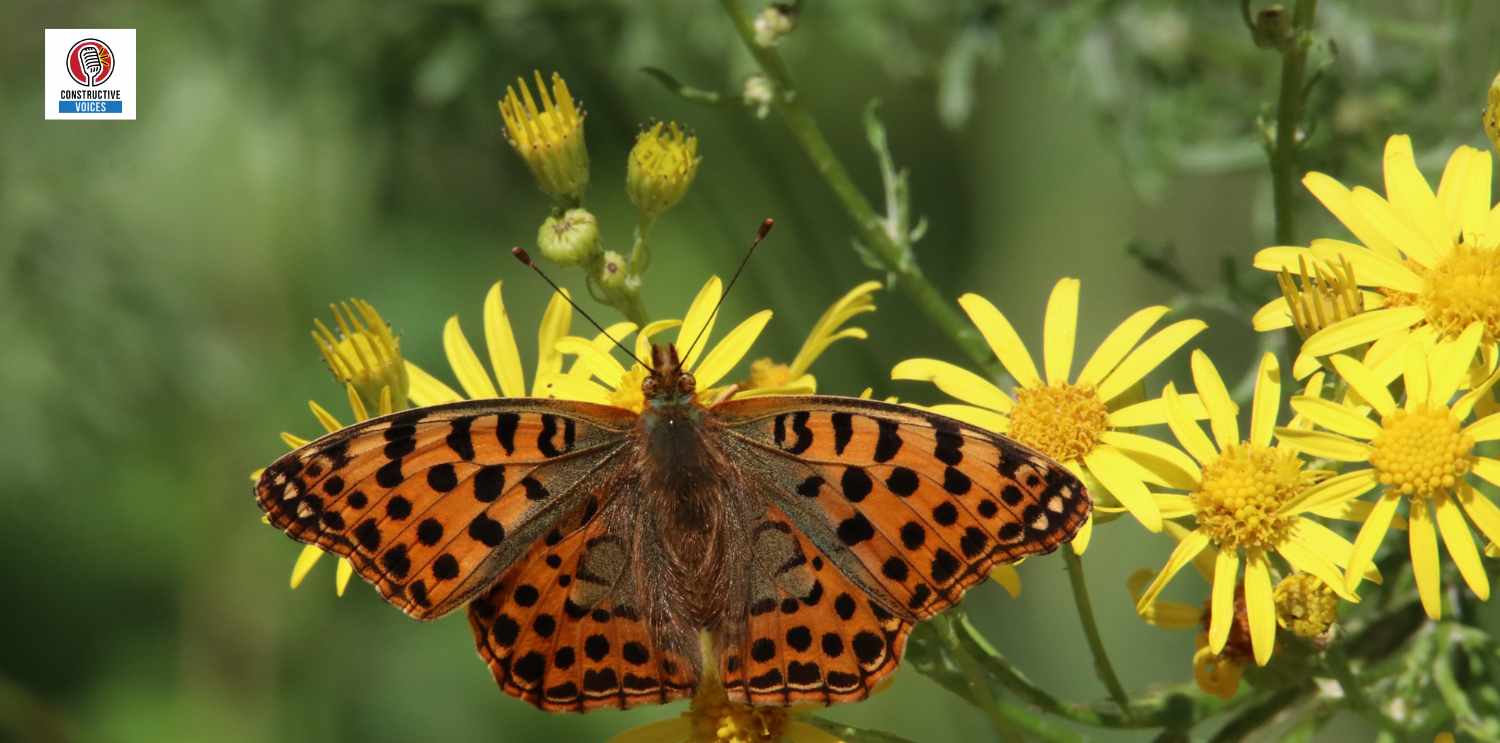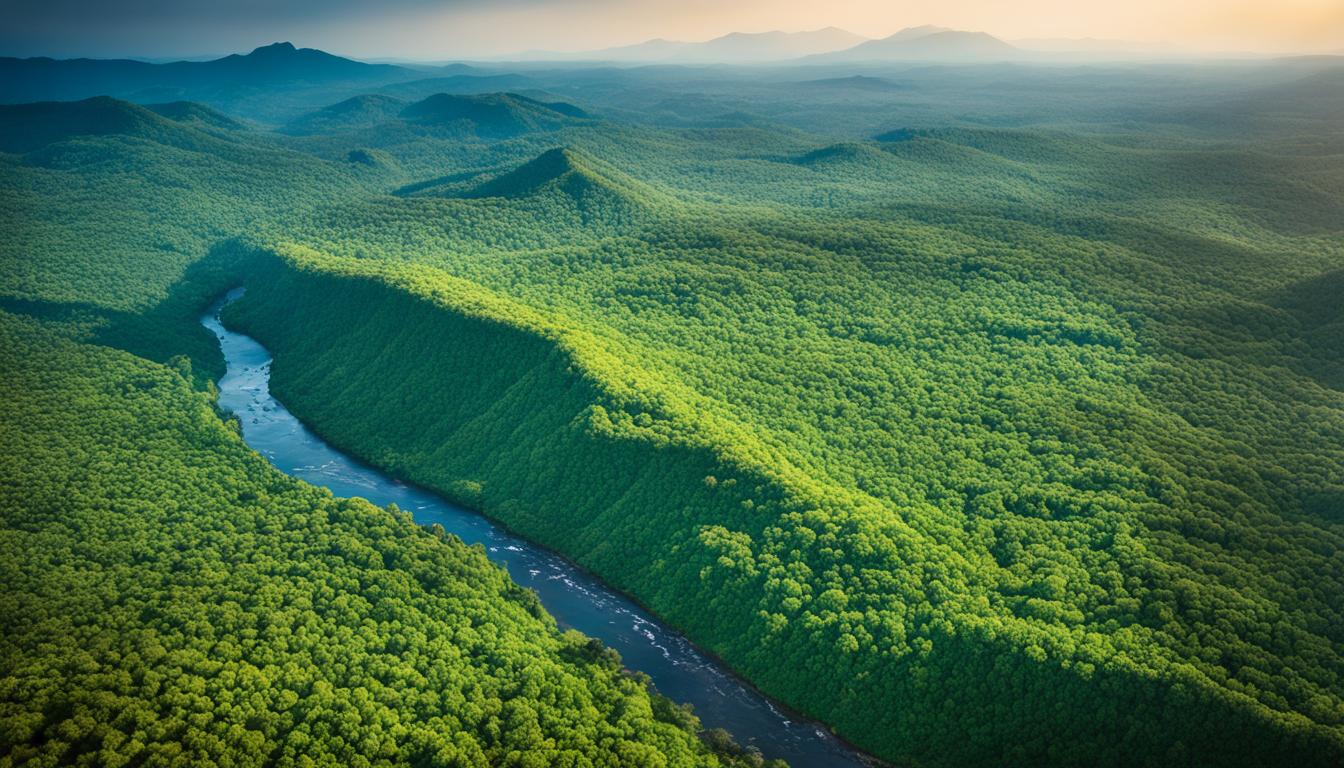Nicaragua Biodiversity and the Built Environment
Did you know that Nicaragua is home to over 30,000 species of plants and animals? With its rich biodiversity, this Central American country is a haven for wildlife enthusiasts and nature lovers. However, this unique ecosystem is under threat from habitat loss, poaching, and climate change. In this article, we will explore the importance of conserving Nicaragua’s biodiversity and the efforts being made to protect its natural treasures.
Key Takeaways:
- Nicaragua is known for its diverse flora and fauna, with over 30,000 species calling the country home.
- Habitat loss, poaching, and climate change pose significant threats to Nicaragua’s biodiversity.
- Efforts by organizations like Fauna & Flora and indigenous communities are crucial in preserving and protecting Nicaragua’s natural resources.
- The future of the Nicaragua Canal project, aimed at competing with the Panama Canal, remains uncertain.
- Preserving Nicaragua’s biodiversity is vital for sustainable development and the conservation of unique ecological treasures.
Nicaragua’s Diverse Landscapes and Spectacular Biodiversity
Nicaragua, with its diverse landscapes, is a haven for spectacular biodiversity. From lush forests to vibrant rainforests, misty cloud forests to rich mangroves, and dry tropical forests, the country offers a multitude of habitats for a wide range of wildlife.
One of the remarkable features of Nicaragua’s biodiversity is its wealth of endangered species. Among them, the Ometepe salamander, yellow-naped parrot, and nesting turtles capture the hearts of researchers and conservationists alike. These species, endemic to Nicaragua, are vital indicators of the country’s ecological health.
The commitment to protect Nicaragua’s biodiversity is driven by the understanding that habitat loss, illegal poaching, and climate change pose significant threats. With each passing day, the need to safeguard these fragile ecosystems becomes more urgent.
“Nicaragua’s biodiversity is a testament to the country’s ecological richness and demands our unwavering dedication to its preservation.” – Conservationist Maria Sanchez
By addressing the challenges that endanger this remarkable biodiversity, we can ensure the survival of these unique species and maintain the delicate balance of Nicaragua’s ecosystems.
| Endangered Species | Location | Conservation Status |
|---|---|---|
| Ometepe Salamander | Ometepe Island | Critically Endangered |
| Yellow-naped Parrot | Central Pacific Coast | Endangered |
| Nesting Turtles | Caribbean Coast | Endangered |
The diversity of landscapes and the incredible biodiversity found within Nicaragua’s borders are a testament to the country’s ecological wealth. Preserving these natural wonders is not only crucial for the survival of unique species but also for the overall health of our planet.
Stay tuned for section 3, where we will explore key facts about Nicaragua’s biodoversity.
Key Facts about Nicaragua’s Biodiversity
Nicaragua is home to a rich array of species, showcasing its remarkable biodiversity. With around 30,000 species, including 370 plants, 215 birds, and 85 mammals, Nicaragua’s diverse ecosystems provide habitats for a wide variety of wildlife.
However, this biodiversity is under threat. Between 1990 and 2005, Nicaragua experienced a significant loss of forest cover, with 21% of the country’s forests disappearing. This rapid deforestation poses a serious risk to the survival of numerous species and disrupts delicate ecological balances.
Efforts to preserve Nicaragua’s biodiversity need to urgently address the issues of deforestation, habitat loss, and human activities that contribute to the decline of species and degradation of ecosystems. Conservation measures should not only aim to protect the existing populations but also focus on restoring and expanding suitable habitats to support the recovery and growth of species populations.
By raising awareness, implementing sustainable practices, and collaborating with local communities, conservation organizations and the government can work together to safeguard Nicaragua’s valuable natural heritage for future generations.
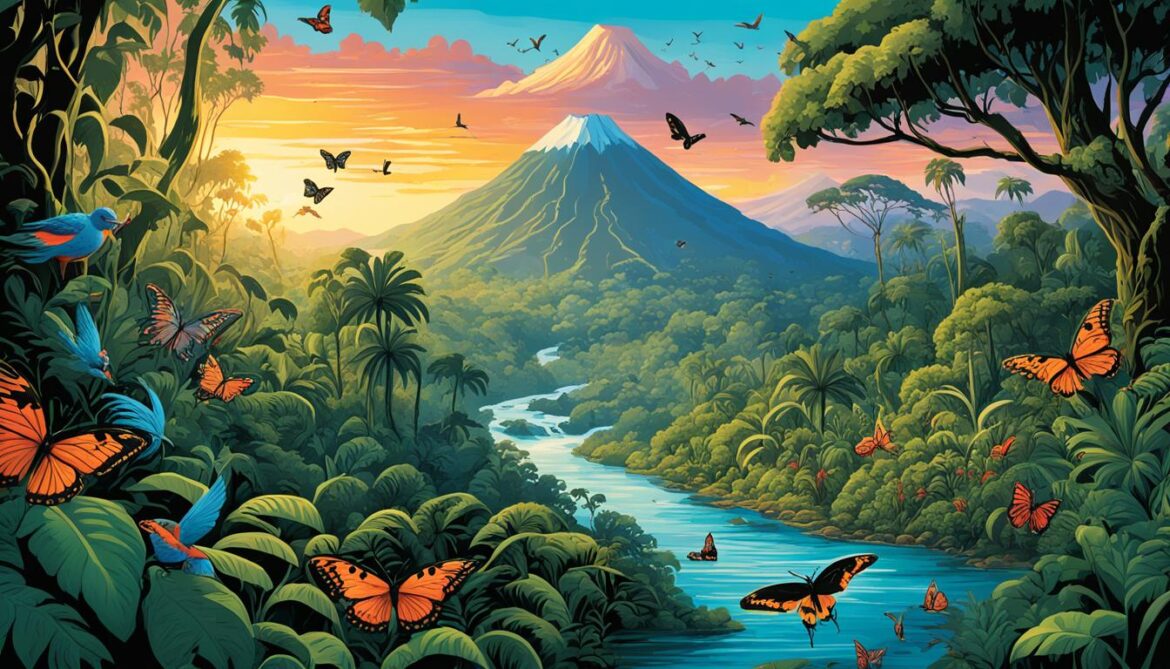
Fauna & Flora, a renowned conservation organization, has been actively involved in protecting Nicaragua’s diverse wildlife and flora since 1998. Through partnerships with local communities and initiatives focused on wildlife protection and sustainable practices, their efforts have made a significant impact on preserving Nicaragua’s unique biodiversity.
Reducing Sea Turtle Poaching
One of Fauna & Flora’s core initiatives is the reduction of sea turtle poaching in Nicaragua. Sea turtles are an essential part of the country’s coastal ecosystems, and their populations have been severely affected by human activities. Fauna & Flora works closely with local communities to raise awareness about the importance of turtle conservation, implement sustainable fishing practices, and establish protected nesting sites.
Protecting Nesting Sites
Another crucial aspect of Fauna & Flora’s work is the protection of nesting sites for various species in Nicaragua. By creating designated conservation areas and implementing measures to prevent habitat destruction, the organization aims to ensure the survival and successful reproduction of endangered wildlife. This includes conducting regular monitoring activities, educating communities on responsible tourism, and enforcing regulations to safeguard nesting sites.
“Our mission is to work hand in hand with local communities, empowering them to become stewards of their environment and protect the unique wildlife of Nicaragua,” says Dr. Maria Lopez, a conservation biologist at Fauna & Flora. “Through sustainable practices and community engagement, we can mitigate the threats to Nicaragua’s biodiversity.”
Managing Ometepe Island
Ometepe Island, located in Lake Nicaragua, is a UNESCO Biosphere Reserve and home to various species of flora and fauna. Fauna & Flora plays a vital role in managing the conservation efforts on the island, collaborating with local authorities and indigenous communities. Their work includes monitoring wildlife populations, restoring degraded habitats, and promoting sustainable tourism practices to minimize the impact on the island’s delicate ecosystem.

Fauna & Flora’s holistic approach to biodiversity conservation in Nicaragua encompasses not only wildlife protection but also sustainable livelihoods for local communities. By promoting alternative income-generating activities such as ecotourism and supporting sustainable farming practices, they empower communities to become active participants in the preservation of Nicaragua’s natural heritage.
Threats to Nicaragua’s Bosawás Biosphere Reserve
The Bosawás Biosphere Reserve is a vast and remarkable rainforest region located in Nicaragua, making it one of the largest of its kind in Latin America. This breathtaking reserve is not only known for its magnificent landscapes but also for the rich diversity of flora and fauna it harbors. Within its dense forests, you can find majestic jaguars, elusive tapirs, and playful primates, just to name a few.
However, the Bosawás Biosphere Reserve faces severe threats that endanger its unique biodiversity. Deforestation, driven primarily by migration, agriculture, and ranching, poses a significant challenge to the conservation efforts in the reserve. The clearing of land for these activities disrupts the delicate ecosystem, displacing and endangering countless species that call Bosawás home.
Compounding the issue are the conflicts between indigenous communities and non-indigenous settlers. These conflicts often arise due to differences in land tenure and conflicting resource use within the reserve. Such tensions further exacerbate the threats to Bosawás’ biodiversity and hinder conservation efforts.
The Impact of Deforestation on Bosawás Biosphere Reserve
Deforestation within the Bosawás Biosphere Reserve has a cascading effect on the environment and wildlife. The loss of tree cover disrupts the delicate balance of the ecosystem, leading to soil erosion, degradation of water quality, and increased vulnerability to climate change. The destruction of habitat threatens the survival of numerous plant and animal species, many of which are endemic and endangered.
“Deforestation is robbing Bosawás of its natural heritage and jeopardizing the delicate balance of life in this unique rainforest reserve.”
Safeguarding Bosawás’ Biodiversity for Future Generations
Protecting the Bosawás Biosphere Reserve is not only crucial for conserving Nicaragua’s biodiversity but also for ensuring the well-being of local communities who rely on the natural resources found within the reserve. Efforts must be made to address the root causes of deforestation, including land disputes, unsustainable agricultural practices, and lack of alternative livelihood options.
Collaboration between indigenous communities, government agencies, and conservation organizations is vital to mitigate the threats and implement sustainable solutions. By promoting community-led conservation initiatives, supporting sustainable livelihoods, and raising awareness about the importance of biodiversity, we can work towards safeguarding the Bosawás Biosphere Reserve for future generations.
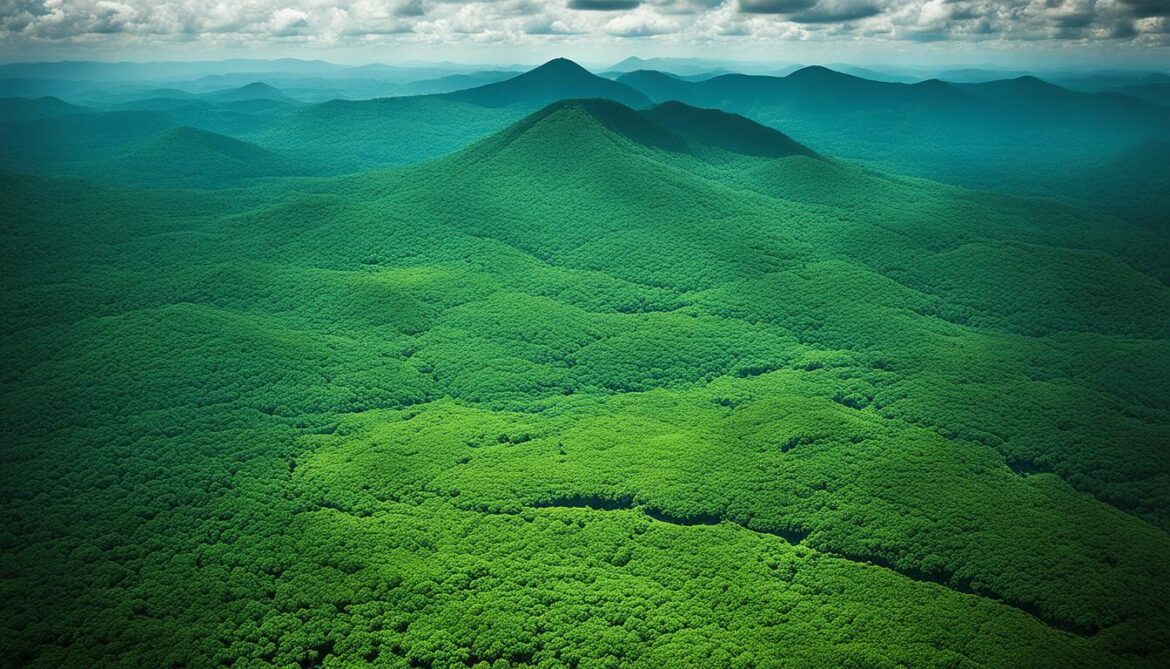
Only through collective action and a shared commitment to preserve the natural wonders of Bosawás can we ensure the long-term survival and thriving ecosystem of this extraordinary rainforest reserve.
Indigenous Perspectives on Deforestation in Bosawás Biosphere Reserve
Indigenous communities in Nicaragua, including the Mayagna, have a long-standing tradition of protecting forests and wildlife. These communities understand the intrinsic value of their natural surroundings and the need for sustainable practices to ensure the well-being of future generations. However, their efforts to preserve biodiversity face considerable challenges due to encroachment by non-indigenous settlers.
The encroachment of non-indigenous settlers on the territories of indigenous communities poses a direct threat to their conservation efforts. Deforestation driven by land clearance for agricultural purposes and illegal logging disrupts the delicate balance of the Bosawás Biosphere Reserve. This destructive activity erodes the natural habitats of countless species and undermines the indigenous communities’ longstanding conservation practices.
Despite the adversities they face, indigenous communities understand the importance of sustainable resource management and cultural preservation. They recognize that the forests and wildlife are not only crucial for their livelihoods but also play a vital role in maintaining ecological harmony. By practicing sustainable use of resources and embracing traditional knowledge, they strive to ensure the long-term conservation of the Bosawás Biosphere Reserve.
“Our forests are our lifeblood. We must protect them for the sake of our future generations and all living beings that call this place home.” – Mayagna Community Leader
The indigenous communities’ conservation efforts are further threatened by the proposed Nicaragua Canal project. The construction of the canal would not only disrupt the delicate ecosystems of the Bosawás Biosphere Reserve but also displace indigenous communities from their ancestral lands. This displacement would not only have devastating social and cultural consequences but also jeopardize the conservation practices that have been passed down for generations.

To fully appreciate the significance of indigenous perspectives on deforestation, it is essential to understand the value they place on the interconnectedness of nature, culture, and sustainable practices. Only by acknowledging and respecting their ancestral knowledge can we work together to protect the invaluable biodiversity within the Bosawás Biosphere Reserve and ensure a sustainable future for all.
Plans for the Nicaragua Canal
The idea of constructing a canal in Nicaragua has been a topic of discussion since the 19th century. The current project, signed with a Chinese company, aims to create a transoceanic canal that would serve as a competitor to the Panama Canal. However, there are several challenges that need to be addressed in the construction process.
Construction costs for such a massive undertaking are a significant concern. Building a canal of this scale requires immense financial resources, which may pose a hurdle to its realization. Additionally, the geological and environmental risks associated with canal construction in Nicaragua cannot be ignored. The area’s unique geography and ecosystems need careful consideration to minimize any negative impacts.
Political instability in the region is another factor that adds to the challenges of the Nicaragua Canal project. The success of such a massive infrastructure undertaking depends on a stable political environment and government support.
Market potential and competition are critical factors that impact the feasibility of the Nicaragua Canal. The Panama Canal, with its established reputation and infrastructure, presents tough competition. The market demands and trade patterns need careful analysis to ensure the viability and profitability of the Nicaragua Canal.
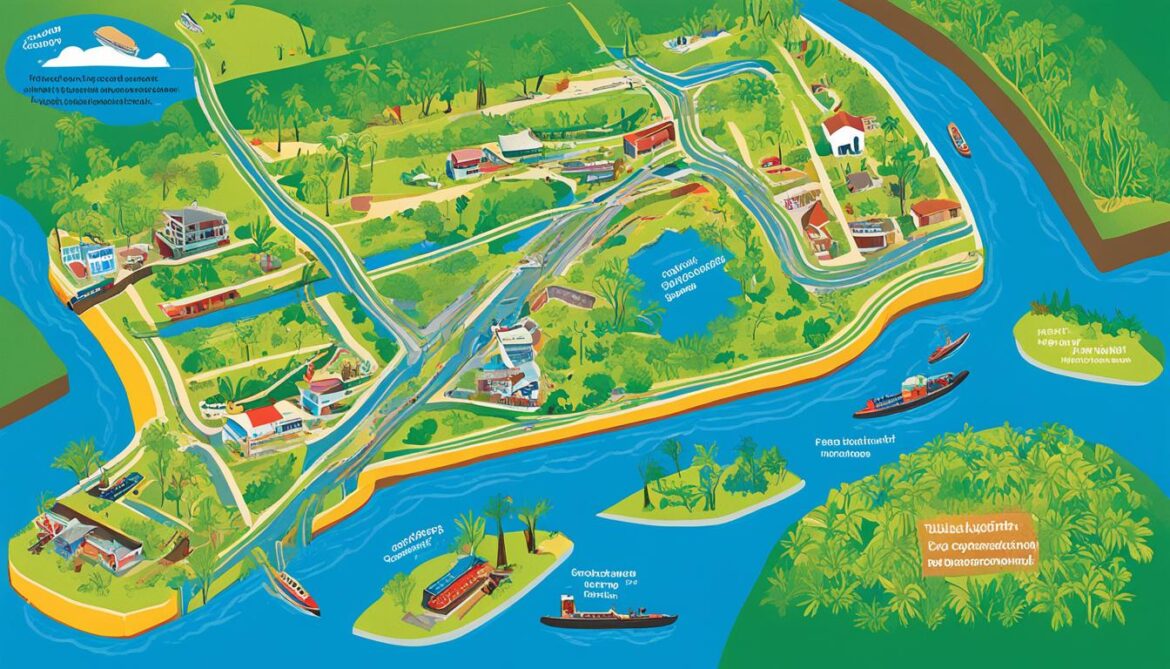
The Future of the Nicaragua Canal Project
The Nicaragua Canal project remains uncertain and faces numerous hurdles. Since its stalled progress in 2016, limited information has been released, leaving the project’s viability in question.
Financing, engineering complexity, geological risks, and market competition all contribute to the uncertain future of the Nicaragua Canal.
The financial aspect of the project poses a significant challenge, as securing the necessary funds for such a large-scale undertaking remains a daunting task. Additionally, the complex engineering requirements and potential geological risks further complicate the feasibility of the canal.
Furthermore, the Nicaragua Canal faces significant market competition, particularly with the recent expansion of the Panama Canal. As an established transoceanic route, the Panama Canal offers a viable alternative for global trade, raising questions about the necessity and demand for the Nicaragua Canal.
Image:
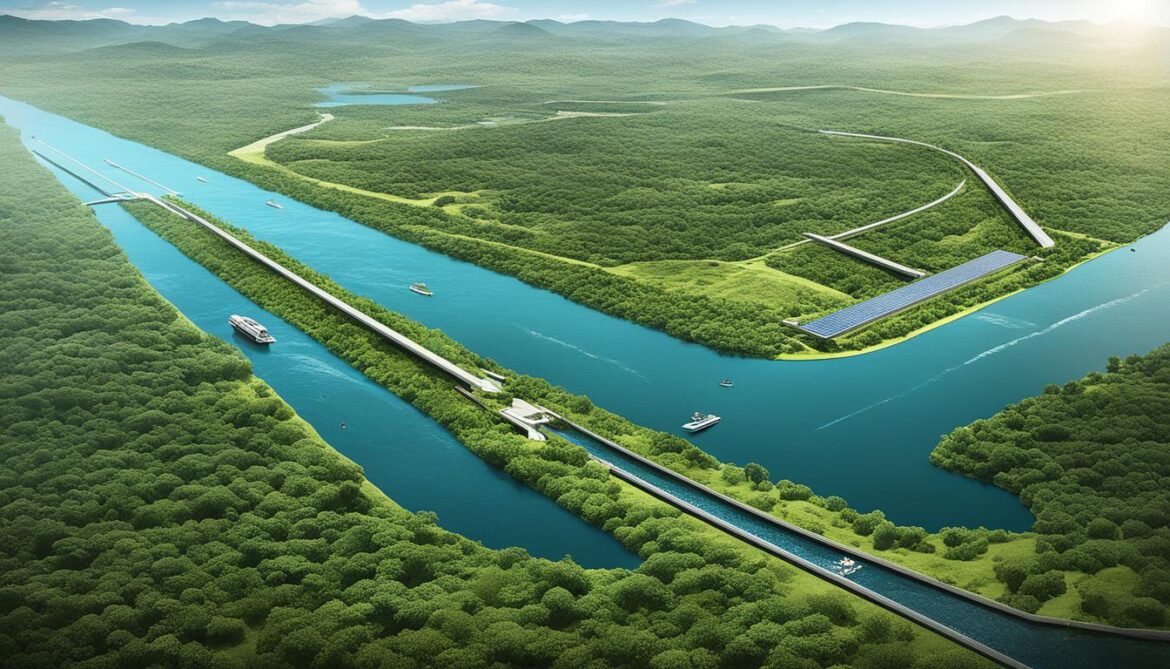
Evaluating Alternatives: Panama Canal Expansion
The expansion of the Panama Canal, completed in 2016, has increased its capacity and improved efficiency, accommodating larger vessels and boosting maritime trade. This expansion provides shippers with a reliable and established option for transiting between the Atlantic and Pacific Oceans, potentially diminishing the need for the Nicaragua Canal.
Facing multiple obstacles and strong competition from the Panama Canal, the future of the Nicaragua Canal project remains uncertain. Without clear progress or released updates, the viability and necessity of this ambitious undertaking remain in doubt.
Conclusion
Nicaragua’s biodiversity and the built environment are inextricably intertwined. The country’s remarkable wildlife and plant species face imminent threats due to habitat loss, poaching, and the impacts of climate change. The preservation of Nicaragua’s unique ecological treasures is crucial for sustainable development and the well-being of future generations.
Several organizations, including Fauna & Flora, are actively working towards protecting Nicaragua’s biodiversity. Through their initiatives, they strive to reduce poaching, conserve nesting sites, and support the management of important areas like Ometepe Island. These efforts are complemented by the invaluable contributions of indigenous communities, such as the Mayagna, who have a longstanding tradition of safeguarding forests and wildlife.
While efforts to preserve Nicaragua’s biodiversity are commendable, challenges persist. The Nicaragua Canal project, a controversial endeavor set to rival the Panama Canal, remains uncertain. Financial, engineering, and environmental risks, as well as market competition, have cast doubt on the project’s feasibility. In light of this uncertainty, alternatives such as the expansion of the Panama Canal and other sustainable development practices should be considered.
By prioritizing the protection of Nicaragua’s biodiversity and collaborating with local communities, we can strive for a future that balances the development of the built environment with the preservation of nature’s wonders. Together, we can ensure that Nicaragua’s diverse flora and fauna continue to thrive, providing a sustainable legacy for generations to come.
FAQ
What is the biodiversity like in Nicaragua?
Nicaragua is renowned for its diverse wildlife and plant species. It is home to around 30,000 species, including 370 plant species, 215 bird species, and 85 mammal species. The country boasts lush forests, vibrant rainforests, misty cloud forests, rich mangroves, and dry tropical forests, each offering a unique habitat for a diverse range of wildlife.
What are the major threats to Nicaragua’s biodiversity?
Habitat loss, illegal poaching, and climate change are major threats to Nicaragua’s biodiversity. Between 1990 and 2005, 21% of the country’s forests disappeared, posing a significant threat to its unique ecological treasures.
What efforts are being made to protect Nicaragua’s biodiversity?
The government of Nicaragua and organizations like Fauna & Flora are working towards protecting Nicaragua’s biodiversity. Fauna & Flora has been actively working in Nicaragua since 1998 to conserve wildlife and support local partners. Their initiatives focus on reducing sea turtle poaching, protecting nesting sites, and managing Ometepe Island. They also promote sustainable livelihoods and eliminate destructive fishing practices to empower communities to protect biodiversity.
What is the Bosawás Biosphere Reserve in Nicaragua?
The Bosawás Biosphere Reserve in Nicaragua is one of the largest rainforest regions in Latin America. It houses a rich variety of flora and fauna, including jaguars, tapirs, and primates. However, deforestation driven by migration, agriculture, and ranching poses a significant threat to the reserve’s biodiversity.
How do indigenous communities contribute to the conservation of biodiversity in Nicaragua?
Indigenous communities, such as the Mayagna, play a crucial role in preserving Nicaragua’s flora and fauna. They have a tradition of protecting forests and wildlife and recognize the importance of sustainable use of resources and cultural preservation. However, encroachment by non-indigenous settlers threatens their efforts in preserving biodiversity.
What is the Nicaragua Canal project?
The Nicaragua Canal project is a proposed transoceanic canal crossing in Nicaragua, similar to the Panama Canal. Plans for a canal crossing in Nicaragua date back to the 19th century, and a recent project signed with a Chinese company aims to compete with the Panama Canal in terms of market potential and transportation efficiency.
What are the challenges and uncertainties surrounding the Nicaragua Canal project?
The Nicaragua Canal project faces challenges and uncertainties due to various factors. These include construction costs, geophysical and environmental risks, political instability, competition, financing, engineering complexity, and geological risks. The project’s uncertain future is further influenced by alternative options, such as the expansion of the Panama Canal and market competition.
How are Nicaragua’s biodiversity and the built environment connected?
Nicaragua’s biodiversity and the built environment are intricately connected. Protecting biodiversity is crucial for sustainable development and the preservation of unique ecological treasures in Nicaragua. Efforts by organizations like Fauna & Flora and indigenous communities play a vital role in conserving biodiversity, while threats to biodiversity, such as deforestation and habitat loss, must be addressed in urban planning and development strategies.
What is the future of the Nicaragua Canal project?
The future of the Nicaragua Canal project remains uncertain and faces numerous hurdles. Limited information has been released since the project stalled in 2016. Financing, engineering complexity, geological risks, and market competition contribute to its uncertain prospects for realization. Alternative options, such as the expansion of the Panama Canal, also offer viable alternatives.
What is the significance of Nicaragua’s biodiversity and built environment?
Nicaragua’s biodiversity and built environment are of great significance. The country is home to unique ecological treasures and a diverse range of species. Safeguarding Nicaragua’s biodiversity is crucial for sustainable development and the preservation of its natural heritage for future generations.



